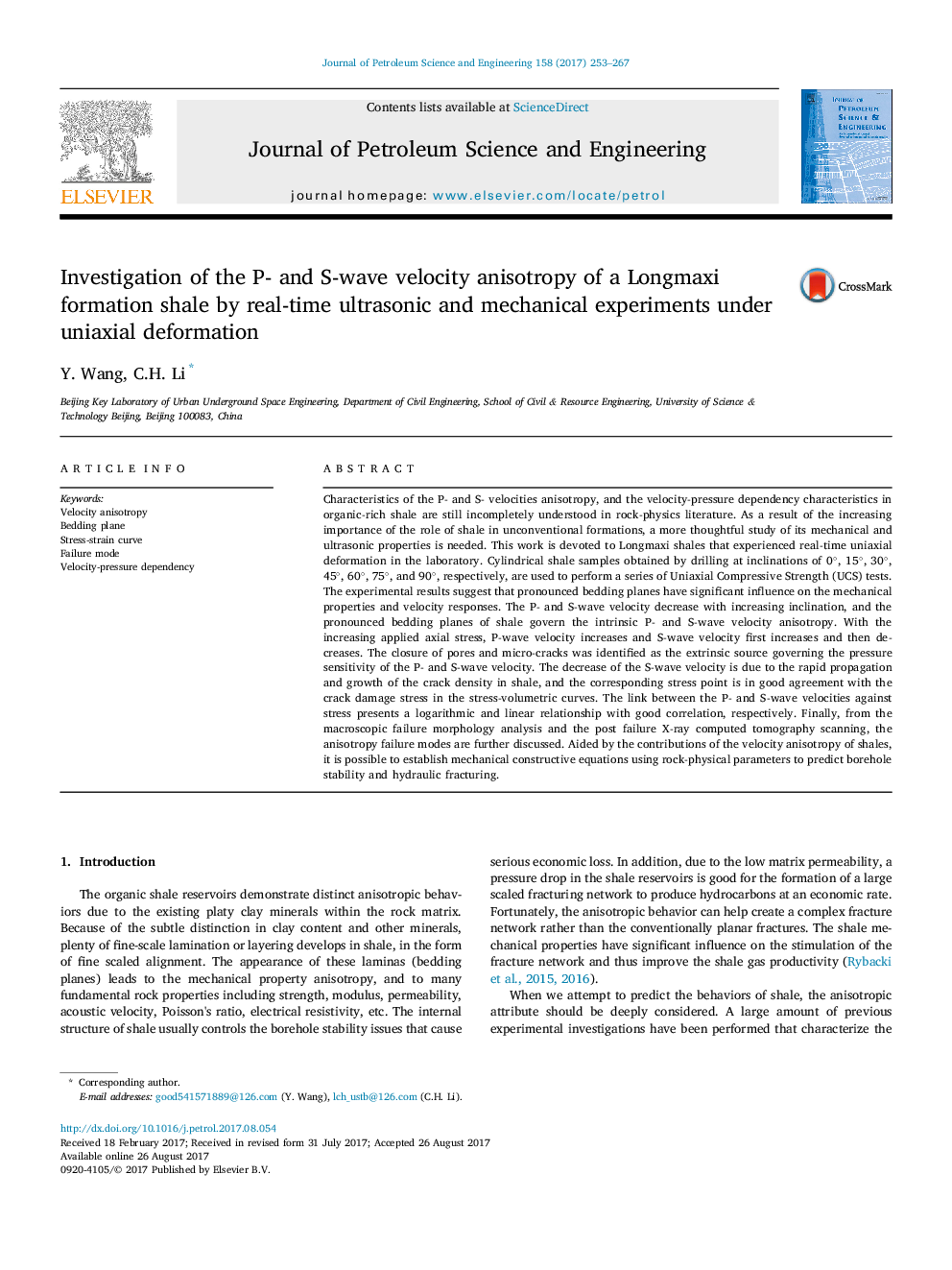| کد مقاله | کد نشریه | سال انتشار | مقاله انگلیسی | نسخه تمام متن |
|---|---|---|---|---|
| 8125611 | 1522783 | 2017 | 15 صفحه PDF | دانلود رایگان |
عنوان انگلیسی مقاله ISI
Investigation of the P- and S-wave velocity anisotropy of a Longmaxi formation shale by real-time ultrasonic and mechanical experiments under uniaxial deformation
دانلود مقاله + سفارش ترجمه
دانلود مقاله ISI انگلیسی
رایگان برای ایرانیان
کلمات کلیدی
موضوعات مرتبط
مهندسی و علوم پایه
علوم زمین و سیارات
زمین شناسی اقتصادی
پیش نمایش صفحه اول مقاله

چکیده انگلیسی
Characteristics of the P- and S- velocities anisotropy, and the velocity-pressure dependency characteristics in organic-rich shale are still incompletely understood in rock-physics literature. As a result of the increasing importance of the role of shale in unconventional formations, a more thoughtful study of its mechanical and ultrasonic properties is needed. This work is devoted to Longmaxi shales that experienced real-time uniaxial deformation in the laboratory. Cylindrical shale samples obtained by drilling at inclinations of 0°, 15°, 30°, 45°, 60°, 75°, and 90°, respectively, are used to perform a series of Uniaxial Compressive Strength (UCS) tests. The experimental results suggest that pronounced bedding planes have significant influence on the mechanical properties and velocity responses. The P- and S-wave velocity decrease with increasing inclination, and the pronounced bedding planes of shale govern the intrinsic P- and S-wave velocity anisotropy. With the increasing applied axial stress, P-wave velocity increases and S-wave velocity first increases and then decreases. The closure of pores and micro-cracks was identified as the extrinsic source governing the pressure sensitivity of the P- and S-wave velocity. The decrease of the S-wave velocity is due to the rapid propagation and growth of the crack density in shale, and the corresponding stress point is in good agreement with the crack damage stress in the stress-volumetric curves. The link between the P- and S-wave velocities against stress presents a logarithmic and linear relationship with good correlation, respectively. Finally, from the macroscopic failure morphology analysis and the post failure X-ray computed tomography scanning, the anisotropy failure modes are further discussed. Aided by the contributions of the velocity anisotropy of shales, it is possible to establish mechanical constructive equations using rock-physical parameters to predict borehole stability and hydraulic fracturing.
ناشر
Database: Elsevier - ScienceDirect (ساینس دایرکت)
Journal: Journal of Petroleum Science and Engineering - Volume 158, September 2017, Pages 253-267
Journal: Journal of Petroleum Science and Engineering - Volume 158, September 2017, Pages 253-267
نویسندگان
Y. Wang, C.H. Li,